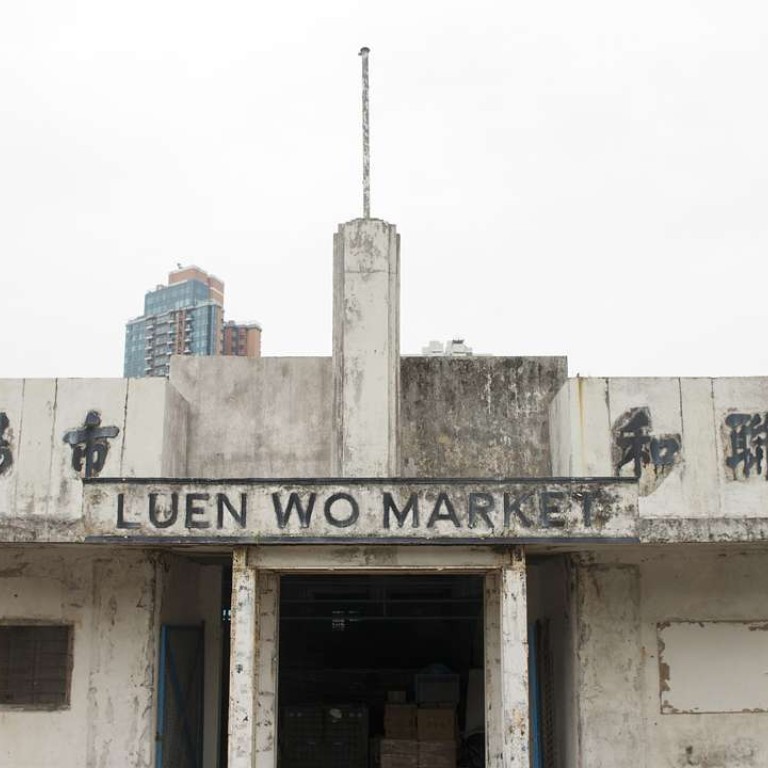
Luen Wo Market among four more Hong Kong heritage buildings offered up by government for revitalisation
Development Bureau offers non-profit organisations the chance to revamp and run historic sites, but concerns remain about their viability
Four more heritage buildings have been offered up by the government to be revitalised and run by independent organisations, despite revelations that some sites have been struggling with operational and financial difficulties.
The Development Bureau on Thursday launched its fifth round of the Revitalising Historic Buildings Through Partnership Scheme, which featured in its line-up Luen Wo Market, the first and largest private wet market built in the New Territories after the second world war.
The scheme, which aims to conserve and offer government-owned heritage buildings a new lease of life, has so far allocated 15 properties to non-profit organisations, with eight of those already in operation.
“Indeed, there have been several organisations who have experienced difficulties [running the sites] and have come to us for help,” Secretary for Development Paul Chan Mo-po said on Thursday.
“There have also been instances where some organisations have expressed that they wanted to return the site to the government.”

Chan cited difficulties such as attracting people to remote locations and high maintenance costs.
Fong Yuen Study Hall, a former village school in Ma Wan that was revamped into a tourism and Chinese cultural centre, had received a lukewarm response from the public due to its remote location and small size, Chan said.
The site, located on an island sandwiched between Lantau and Tsing Yi, is only accessible by ferry, taxi or a private car with a permit.
Bernard Chan, the former chairman of the board that monitors existing heritage site projects, agreed that it was challenging for applicants to come up with sustainable business models with the right social value for the community.
“From day one, we knew that not all of them would succeed,” Chan said. “But if they fail, the government can still take over – it’s still better than not doing anything to it at all. At least we saved the building and gave the community a shot at it first.”

Paul Chan said the government would strive to offer as much help to operators as possible, which included a HK$5 million subsidy per project if they were unable to break even in the first two years.
Aside from Luen Wo Market, the other sites up for grabs included a century-old former army barracks quarters in Central, the former Lau Fau Shan Police Station and Watervale House at the former Gordon Hard Camp in Tuen Mun.
Despite two of the four buildings being remote or having restricted vehicular access, the current chairman of the board expressed confidence in their prospects.
“Being remotely located doesn’t mean the project will fail. Look at Tai O police station – their heritage hotel is always fully booked on the weekends. The key is what creative ways can be used to attract people,” Lau Chi-pang said.
Being remotely located doesn’t mean the project will fail
Luen Wo Market, a single-storey compound in Fanling built in 1951, could be transformed into a space for restaurants, an education facility or a recyclables collection centre, the bureau said.
The results for the latest batch of buildings are expected to be announced in the first half of 2018.
Since 2007, the government has earmarked HK$2.4 billion for the scheme.
Existing heritage sites include the century-old former Tai Po police station, which was transformed into a green hub to promote sustainable living, and a former law court now housing the Savannah College of Art and Design.

